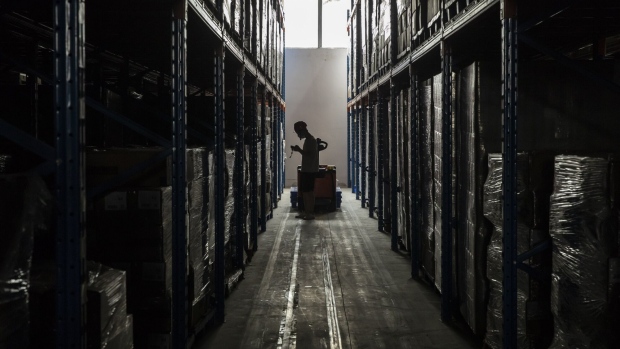Sep 14, 2023
US Producer Prices Rise Most in More Than a Year on Energy Costs
, Bloomberg News

(Bloomberg) -- Prices paid to US producers increased in August by the most in more than a year, boosted by rising energy and transportation costs.
The producer price index for final demand increased by 0.7% from a month earlier, according to the Bureau of Labor Statistics. The cost of gasoline surged 20%, accounting for much of the gain. Excluding food and energy, the PPI rose 0.2%.
While normalizing supply chains and a slowdown in many economies abroad have generally helped alleviate inflationary pressures at the wholesale level, rising oil prices threaten to unravel some of that progress. On an annual basis, the PPI accelerated for a second month following a year-long downward trend.
Other energy categories that increased last month included jet fuel, diesel and heating oil. Within services, residential real estate, truck transportation of freight and wholesaling of machinery and equipment also rose.
The prices of goods jumped 2%, though excluding energy and food they were up 0.1%. Services costs rose 0.2% after a 0.5% gain the prior month.
Several categories from the PPI report, including those related to portfolio management and within health care, are used to calculate the personal consumption expenditures price gauge — the Federal Reserve’s preferred inflation measure — that will be released later this month.
The figures, while volatile on a monthly basis, can be influential. In July, a 7.3% surge in producer prices for portfolio management and investment advice powered a pickup in a key inflation gauge of services closely watched by the Fed. In August, portfolio management costs rose just 0.5%.
Within health care, hospital outpatient and inpatient care declined from the prior month, while physician care was unchanged.
The report follows fresh inflation data out Wednesday that showed a key measure of underlying inflation rose by more than expected. Meanwhile, a spike in gasoline costs fueled the biggest monthly increase in the consumer price index in more than a year.
Read more: US Consumer Prices Jump, Straining Household Budgets Even More
The central bank will review both data points — along with a host of other figures — ahead of their interest-rate decision next week. Policymakers are broadly expected to leave interest rates on hold at conclusion of their two day meeting on Sept. 20.
Stripping out food, energy and trade services, which is a less-volatile PPI measure, prices increased 0.3% in August from a month earlier.
Costs of processed goods for intermediate demand, which reflect prices earlier in the production pipeline, jumped 2.1%. The increase reflected the surge in energy goods and a further gain in food costs. Excluding food and energy, processed goods for intermediate demand dropped for a third month.
--With assistance from Chris Middleton.
©2023 Bloomberg L.P.






